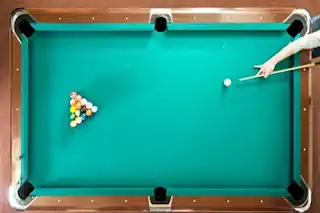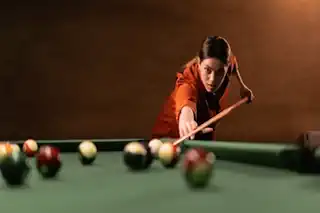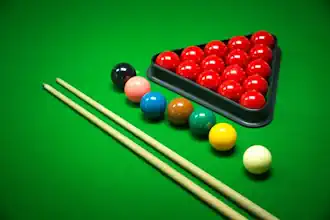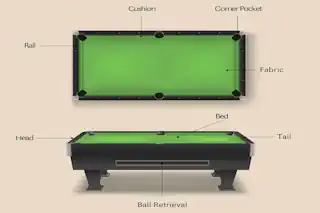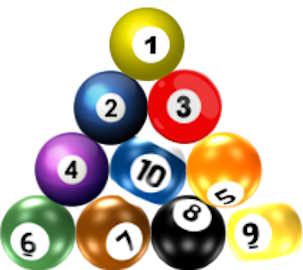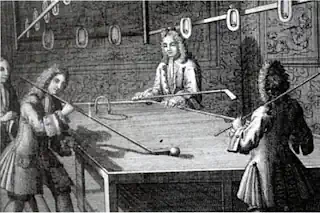Billiard Balls: The Essential Guide for Enthusiasts

Whether you’re an occasional leisure player or a serious billiards aficionado, the role of billiard balls in the game is undeniable. They are the silent protagonists, the tools that transform the green surface into a canvas for strategy, precision, and entertainment. This comprehensive guide dives into the intricate world of billiard balls, drawing from the game’s history and modern-day expertise to enrich your understanding of this critical piece of equipment.
The History of Billiard Balls
The Ivory Era and Transition to Modern Materials
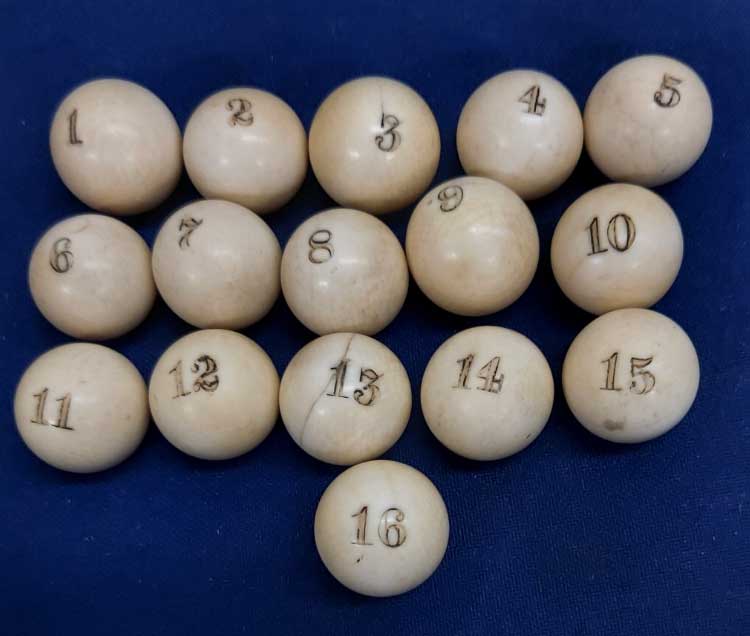
For centuries, billiard balls were crafted from ivory, harvested from elephant tusks. This natural material, prized for its hardness and durability, was the hallmark of quality billiard balls. However, in the mid-20th century, conservation efforts and the emergence of synthetic materials led to a transition away from ivory.
Ivory billiard balls are very rare. For the true billiards enthusiast these are real gems for game play or just as a part of your private collection. If you happen to come across one (or a set) and have the means to acquire it we highly recommend you do so.
Standardization: The Backbone of Modern Billiards
With various materials being used, standardizing the size and weight of billiard balls became essential. The World Pool-Billiard Association’s (WPA) regulations have become the gold standard, ensuring uniformity across the sport.

Billiard Ball Diameter
An essential aspect of standardization in billiards is the uniformity in ball size. According to the World Pool-Billiard Association (WPA), the diameter of a regulation size billiard ball must be 2.25 inches (57.15 mm). This specification ensures consistency in play across tables worldwide, allowing players to apply their skills and strategies effectively, regardless of the venue. Additionally, this uniform diameter plays a crucial role in the predictability of ball trajectories and interactions, vital for both amateur and professional play.
Billiard Ball Weight
Another critical aspect of the standardization process involves the uniform weight of the billiard balls. The World Pool-Billiard Association (WPA) specifies that the standard weight of a billiard ball should not exceed 6 ounces (170 grams) nor be lighter than 5.5 ounces (156 grams). This weight range is crucial for maintaining the balance between momentum and control, allowing players to execute shots with precision. The consistent weight ensures that the balls behave uniformly across different tables and playing conditions, contributing to a fair and competitive environment.
Types of Billiard Balls
Billiard balls are not a one-size-fits-all affair. They come in a variety of types, each serving a distinct purpose in the game.
- Pool Balls: The standard set consists of 15 object balls and a cue ball, used in common games like Eight-Ball and Nine-Ball. The object balls are numbered 1 through 15, with 1-7 being solid colors, 9-15 being stripes, and the 8 ball being solid black.
- Snooker Balls: Used in the game of snooker, this set includes 15 red balls worth one point each, six colored balls with varying point values, and a cue ball. The goal is to score points by potting the balls in a specific order.
- Carom (or Billiard) Balls: This set contains only three balls – a white cue ball for each player (one of which may have a dot), and a red object ball. Used in games like Three-Cushion Billiards, where players score points by hitting both object balls with the cue ball in a single shot, while making at least three rail contacts.
- Blackball (English Pool) Balls: Similar to pool balls but used for playing Blackball, a variant of pool popular in the UK and Commonwealth. The set consists of 15 object balls including 7 reds, 7 yellows, and a black 8-ball, along with a cue ball. The game has different rules and strategies than American pool.
- Training Balls: These are specially designed with markings to help players understand spin, trajectory, and impact. They are beneficial for practice sessions, helping novices and experienced players alike improve their technique.
- Novelty Balls: Often used for decorative purposes or as collectibles, these balls come in various designs, colors, and themes. While not suitable for professional play, they add a personalized touch to a billiard room or a table.
Pool Balls: The Backbone of American Billiards
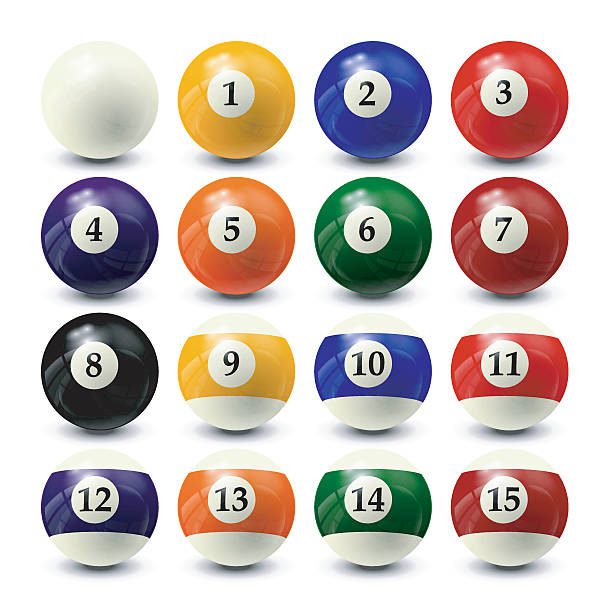
Pool balls are fundamental to the traditional American game, with their distinct numbering system and color scheme allowing for a wide variety of games. The solid and striped balls, along with the black 8-ball, make strategy and skill key components of the game. Understanding the nuances of each ball’s role, from the break to the final pocketing of the 8-ball, can dramatically affect a player’s game strategy and success on the table.
Snooker Balls: A Test of Precision and Strategy
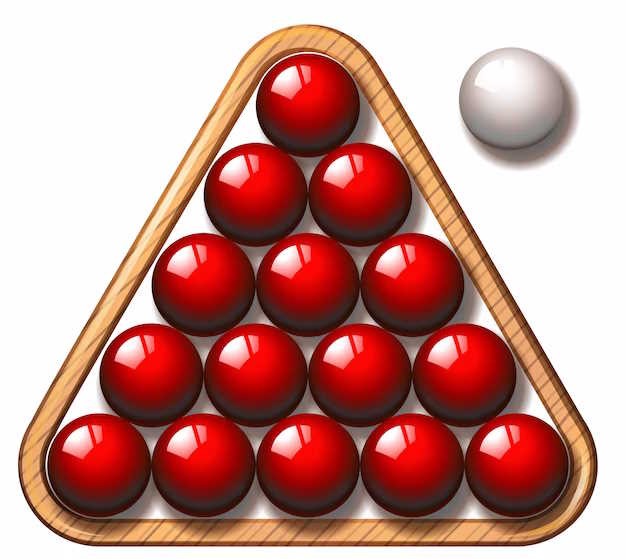
Snooker balls require players to engage in a game of precision, strategy, and long-term planning. The unique scoring system and the requirement to pot balls in a specific sequence demand a high level of skill and tactical prowess. Players must constantly think several shots ahead, making the game both challenging and rewarding.
Carom Balls: Simplifying Complexity
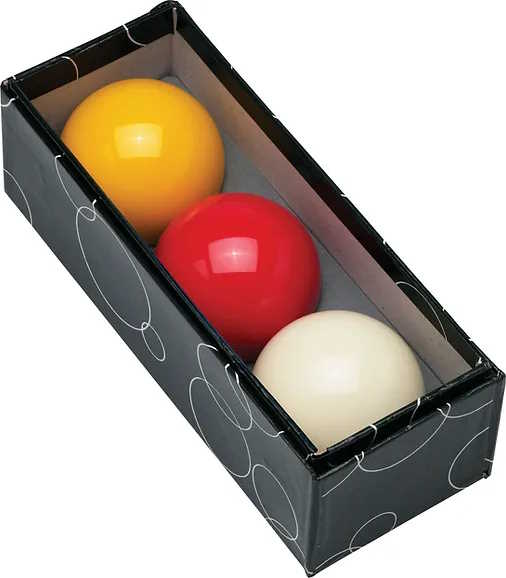
Though comprising only three balls, carom billiards is anything but simple. The game’s requirement for players to hit both object balls with the cue ball in a single shot, including three cushion contacts before hitting the second object ball, introduces a layer of complexity and finesse. Mastery over carom balls is a testament to a player’s precision, control, and strategic foresight.
Blackball Balls: Diverse Strategies in the UK and Beyond
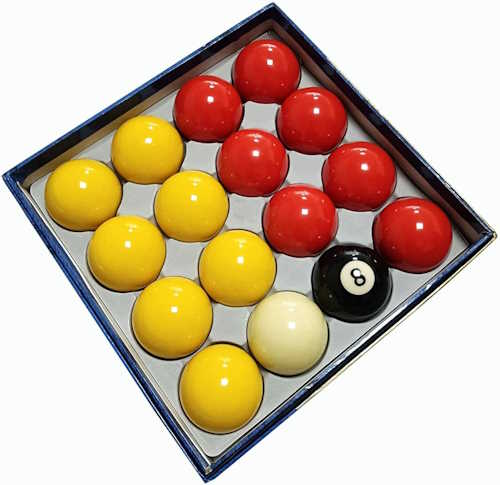
Blackball balls are integral to a variant of pool that enjoys popularity in the UK and Commonwealth countries, offering a different set of strategies and rules. The distinction between reds and yellows, instead of stripes and solids, introduces new dynamics and game-play tactics, adding variety to the pool games repertoire.
Training Balls: Tools for Mastery

Training balls are invaluable for players at all levels, from beginners to seasoned professionals. Markings on these balls can reveal insights into spin, trajectory, and ball interaction, providing immediate feedback to the player. They serve as effective tools for improving one’s game, understanding the physics behind billiard shots, and refining techniques for better shot execution.
Novelty Balls: Adding Fun and Personality

Novelty balls offer a way to personalize the game, making each play session unique. While they may not be suitable for professional competition, they inject fun, color, and personality into the game. Whether used as collectibles, gifts, or as a way to spice up a casual game, novelty balls add an element of excitement and flair to billiards. They are often colored differently and may or may not come as a complete set.
Cue Balls: The White Orb of Possibilities
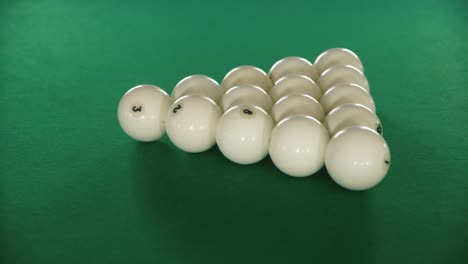
The cue ball, typically white, is used to strike other balls and is the only ball that should be hit with the cue stick in a standard game of billiards. It’s crucial for controlling the game and setting up shots.
Generally the cue ball is solid white but many cue balls are now being used with markings to help the shooter see the spin of the ball. Patterns and markings vary and can enhance the learning process of using spin (or “English”) during game play.
The Characteristics of High-Quality Billiard Balls
The Mark of Excellence: Material and Manufacturing Quality
The best billiard balls are those that maintain their spherical shape, resist chipping and cracking, and have minimal warping. These characteristics contribute to a smoother roll and more predictable rebounds.
Modern billiard balls are predominantly made from high-quality plastics like phenolic resin and polyester which have a very high impact resistance. Each material offers advantages in terms of resilience and consistency, which can significantly affect the quality of play.
The Science of Bounce and Spin
Mastery of the game requires an understanding of how different materials affect ball spin, speed, and the ability to hold a line. High-quality balls made from specialized materials offer reduced friction and increased control, especially on high-speed and spin-dependent shots.
Maintenance and Care Tips
Prolonging the Life of Your Billiard Set
Proper maintenance not only extends the lifespan of your billiard balls but also ensures a more enjoyable and accurate game. Regular cleaning and appropriate storage are must-do tasks to keep them in top condition.
Cleaning Methods and Storage Recommendations
Cleaning billiard balls might seem straightforward, but it’s important to use the right methods to avoid damage. Similarly, choosing the correct storage ensures that your balls retain their integrity over time.
Steps for Cleaning Billiard Balls
- Gather Materials: Before starting, ensure you have a mild detergent, two soft, clean cloths, and a bucket of warm water.
- Prepare Cleaning Solution: Mix a small amount of mild detergent into the bucket of warm water.
- Wipe Balls: Dip one of the soft cloths into the cleaning solution, wring it out slightly, and use it to gently wipe each billiard ball. Pay special attention to removing any chalk marks, dirt, or grime.
- Rinse: After wiping, rinse the balls with a cloth dampened with clean water to remove any soap residue.
- Dry Thoroughly: Using the second clean, dry cloth, thoroughly dry each billiard ball. Ensure they are completely moisture-free to prevent warping or damage.
- Polish (Optional): For an added shine, you can apply a small amount of billiard ball polish and buff each ball with a dry cloth according to the product instructions.
- Inspect for Damage: While cleaning, inspect each ball for cracks, chips, or any signs of wear that could affect gameplay.
- Storage: After cleaning, store your billiard balls in a cool, dry place away from direct sunlight to maintain their condition.
Impact of Billiard Balls on Gameplay
The Crucial Role in Strategic Play
The type, material, and quality of billiard balls have a profound influence on the game. Players’ strategies often revolve around maximizing the potential of their balls and understanding their behavior on the table.
Billiard Ball Design and Different Game Variations
Every billiards game, from the fast-paced eight-ball to the precision-demanding snooker, benefits from specific ball characteristics. Design variations, including weight distribution and surface texture, cater to the complexities of each game style.
Conclusion: Delving Into the Nuances
Billiard balls are more than just game pieces; they are the vessels through which strategy and skill are executed. By appreciating the history, understanding the materials, maintaining them, and observing their impact on the game, you can further your appreciation for this classic sport. For enthusiasts, exploring the intricacies of billiard balls can be as rewarding as mastering the games they play a part in. Whether you’re just starting or have been at it for years, the world of billiard balls offers a depth of knowledge waiting to be explored.
Frequently Asked Questions (FAQs)
What is the best material for billiard balls?
Phenolic resin and polyester are currently the preferred materials for high-quality billiard balls due to their durability, consistency, and resistance to chipping and cracking.
How often should billiard balls be cleaned?
Billiard balls should be cleaned after every few uses or whenever they appear dirty. Regular cleaning ensures optimal playability and prolongs the life of the balls.
Can billiard balls warp?
Yes, billiard balls can warp over time if exposed to excessive moisture or if stored improperly. To prevent warping, balls should be stored in a cool, dry place away from direct sunlight.
Are all billiard balls the same size?
No, the size of billiard balls can vary depending on the game. Standard pool balls are typically 2.25 inches in diameter, while snooker balls are smaller, usually measuring 2.15 inches in diameter.
How can I tell if my billiard balls are worn out?
Signs of wear include noticeable chips, cracks, or a loss of color. Additionally, balls that no longer roll straight or have lost their shine may also indicate it’s time for a replacement.
Is there a difference between the cue ball and other billiard balls?
Yes, the cue ball is typically solid white and is the only ball intended to be struck by the cue stick in most billiard games. Some cue balls have markings to help players see spin effects more clearly.
How does the weight of a billiard ball affect gameplay?
The weight of a billiard ball can influence its momentum, speed, and the energy transferred upon impact. Standard pool balls are designed with a precise weight to ensure consistency and fairness in gameplay.
